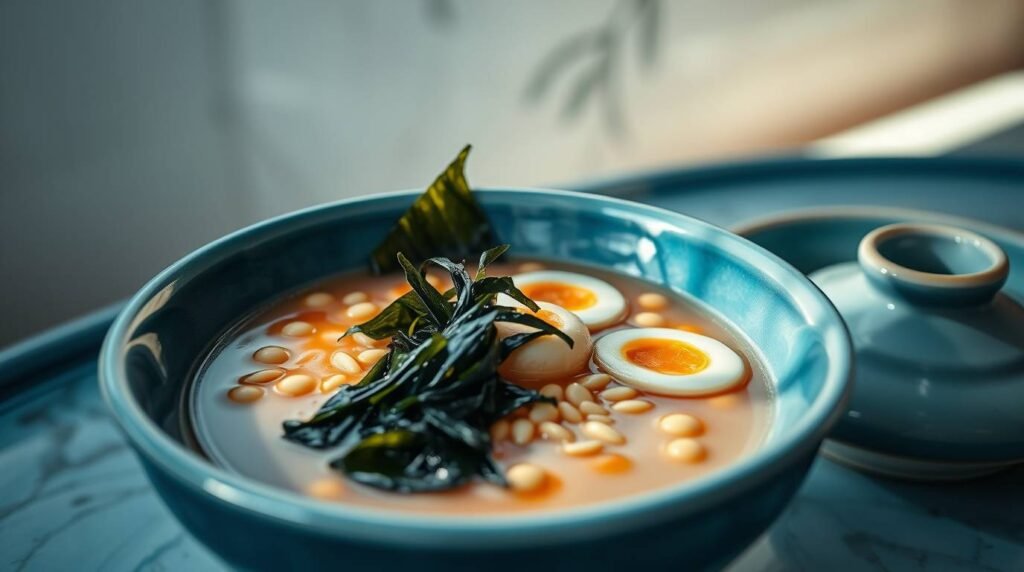
The night the tide roared in Napa, Marco stood by the window of Mystic Bites, watching the reflection of neon signs shimmer across the river like living brushstrokes. He was preparing a new dish — a bowl meant to calm his own inner storm. The air smelled of seaweed, sesame, and something else… anticipation.
On the counter before him lay three tarot cards: The Moon, The Star, and The Hierophant.
The Moon whispered of emotion’s ebb and flow, the Star promised renewal, and the Hierophant reminded him of the sacred order even within chaos. Together, they formed a triad — intuition, expression, grounding.
As he stirred the broth, the steam rose like a phantom wave. He thought of Hokusai, the artist who painted motion and stillness in one eternal instant. “That,” Marco mused, “is what a good dish must do — crash and cradle at once.”
He began to chant softly, his haiku spell forming between breaths:
Beneath foam and tide, Roots anchor in silent strength— The sea learns to sing.
Each movement — slicing tofu, tearing nori, stirring miso — became a ritual. The Root Chakra anchored him to his kitchen floor, to the earth that gave the sea its boundary. The Throat Chakra opened as the broth simmered, releasing a sound he didn’t expect — a deep hum resonating through the pot and through his chest.
He closed his eyes. In that vibration, he felt something ancient rise: the voice of the ocean speaking in the language of salt, flow, and surrender.
When he finally tasted the ramen, it was both grounding and ethereal.
The umami anchored his feet, while the foam carried his voice upward, clear and open — as if the sea itself had spoken through him.
The Moon — Honor the tides of emotion; your intuition is the current that guides you.
The Star — Speak your truth gently, as light upon the water.
The Hierophant — Structure your rituals, so chaos becomes sacred order.
Root Chakra (Muladhara): Ground through nourishment — tofu, seaweed, and the solidity of ritual.
Throat Chakra (Vishuddha): Flow through expression — breath, mantra, and sound.
Every bowl of Oceanic Ramen is a microcosm of The Great Wave — a meditation on being both solid and fluid. It teaches the magician-chef that even in chaos, there is rhythm; even in silence, there is sound.
Experience the taste of the ocean in a bowl with this unique ramen, where tofu pearls meld with a savory broth and nori foam adds a touch of seaside elegance.
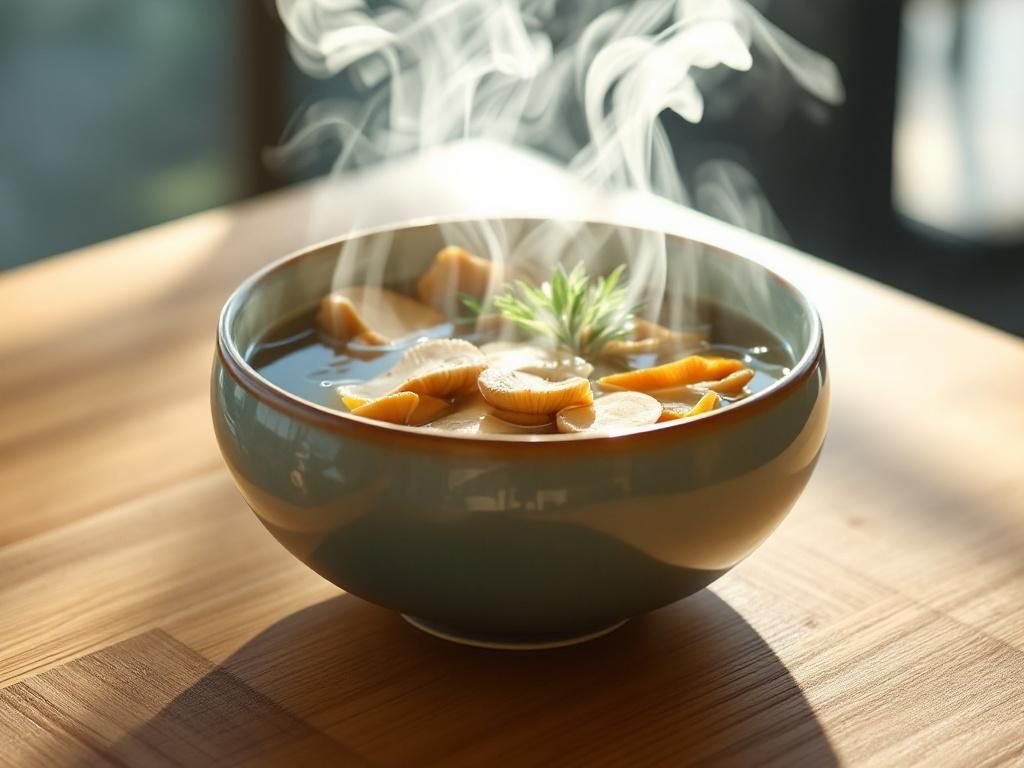 Simmer kombu and shiitake for 15 minutes. Remove solids, then add miso, tamari, ginger, garlic, and sesame oil.
Simmer kombu and shiitake for 15 minutes. Remove solids, then add miso, tamari, ginger, garlic, and sesame oil.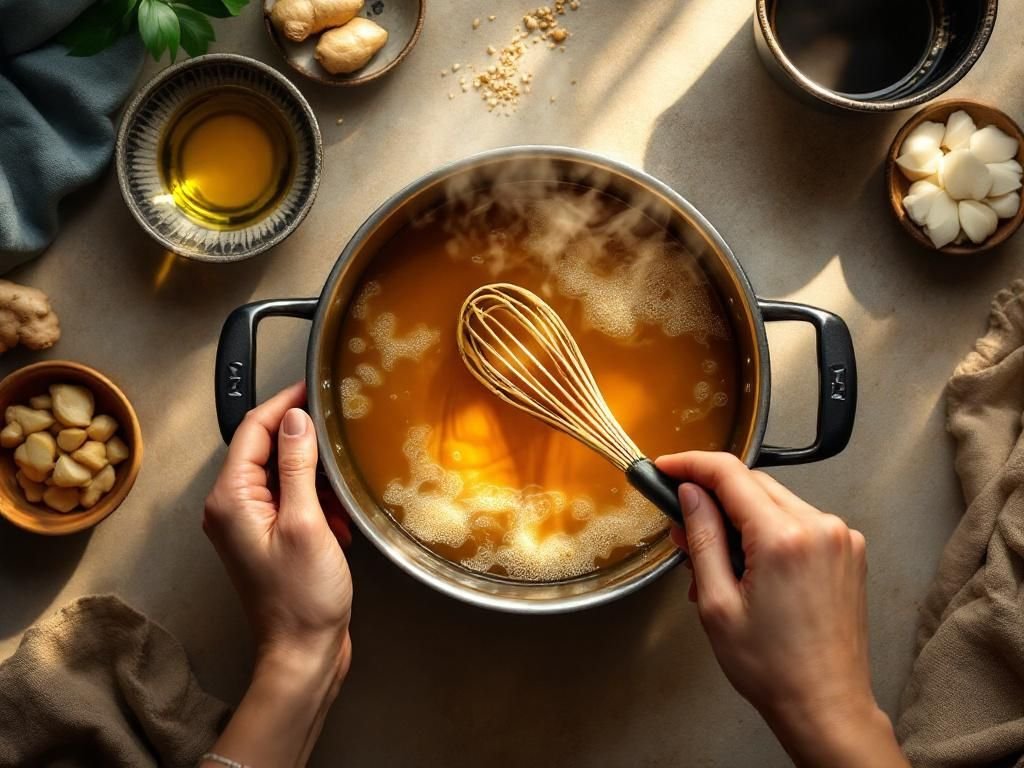 In a separate pot, cook soba noodles until al dente. Rinse under cold water to stop cooking and prevent clumping.
In a separate pot, cook soba noodles until al dente. Rinse under cold water to stop cooking and prevent clumping.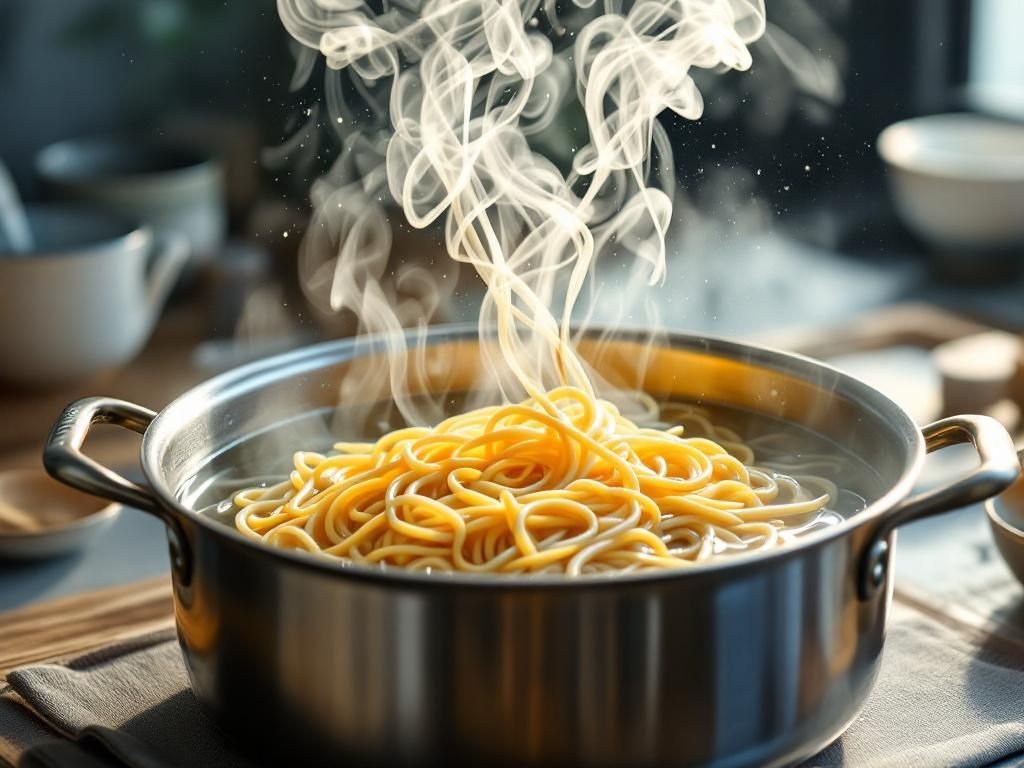 Return noodles to broth, add tofu pearls, bok choy, carrots, and nori. Let it all move together for 2–3 minutes, like the wave meeting the shore.
Return noodles to broth, add tofu pearls, bok choy, carrots, and nori. Let it all move together for 2–3 minutes, like the wave meeting the shore.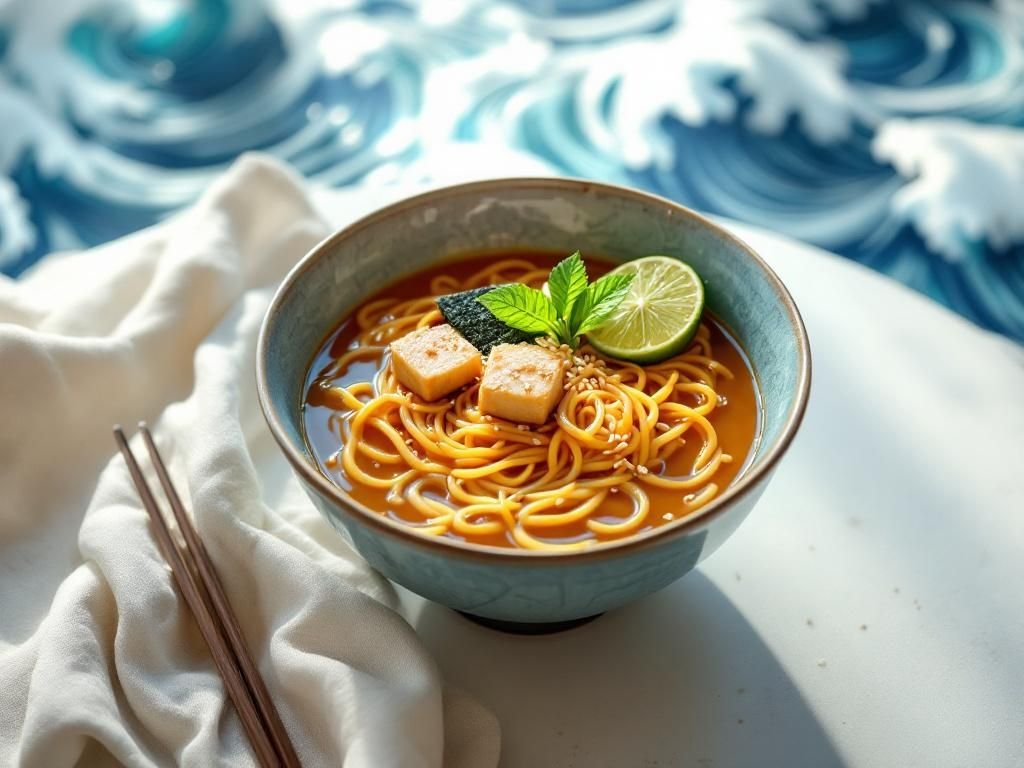 Serve in deep bowls. Sprinkle sesame seeds, add a lime wedge, and drizzle a touch of chili oil.
Serve in deep bowls. Sprinkle sesame seeds, add a lime wedge, and drizzle a touch of chili oil.1 cup butterfly pea flower tea (steeped, deep indigo) — color-changing magic.
½ tsp honey or light agave (optional, to taste)
½ oz fresh lemon or lime juice
Pinch of sea salt or a drop of seaweed-infused tincture (for umami echo)
Sparkling water to top
Ice
Garnish: edible flower (such as violet), a small strip of nori, or a sprig of mint
Note: Butterfly pea flower tea is a popular “blue tea” that shifts color with pH (adding citrus shifts it toward violet). Wikipedia+1
The Oceanic Ramen with Tofu Pearls and Nori Foam presents a harmonious blend of flavors and textures, embodying the delicate balance between the earthiness of the miso-infused broth and the subtle oceanic notes of nori. Each sip of the broth offers a gentle embrace, while the tofu pearls add a creamy contrast that dances on the palate. The fresh crunch of bok choy and carrots complements the softness of the noodles, creating a symphonic culinary experience that transports you to the tranquil shores of a distant coastline.
Crafting this dish is akin to painting with flavors. The aroma of ginger and garlic mingling with the broth evokes a sense of comfort and warmth, reminiscent of cherished moments shared over a nourishing bowl of ramen. The vibrant colors of the ingredients not only please the eye but also invite a deeper appreciation for the art of cooking. This recipe is a testament to the beauty of simplicity and the power of mindful cooking.
For a heartier meal, consider adding a soft-boiled egg or a handful of bean sprouts for additional texture. A sprinkle of toasted sesame seeds or a drizzle of chili oil can elevate the dish with added layers of flavor. To cater to different dietary needs, feel free to substitute the soba noodles with zucchini noodles or other gluten-free options.
I invite you to embark on this culinary journey and explore the depths of flavor this Oceanic Ramen offers. As you savor each bite, reflect on the connection between the ingredients and your senses. I encourage you to share your experiences, variations, or questions, fostering a community of exploration and creativity around this delightful dish.